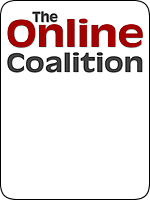
« Eight For The Duke | Main | Iraq: No Timetable »
The Pentagon released its documentation on the detainees held at Guantanamo Bay, Cuba, after a lengthy court battle to keep the information classified. The DoD released transcripts of the tribunals for each of the detainees rather than a list of those held at the prison:
After four years of secrecy, the Pentagon released documents on Friday that have the names of detainees at the American military prison at Guantánamo Bay.The Bush administration had hidden the identities, home countries and other information about the men, who were accused of having links to the Taliban or Al Qaeda. But a federal judge rejected administration arguments that releasing the names would violate the detainees' privacy and could endanger them and their families. The release resulted from a Freedom of Information Act lawsuit filed by The Associated Press.
The names were scattered throughout more than 5,000 pages of transcripts of hearings at Guantánamo Bay, but no complete list was given, and it was not immediately clear how many names the documents contained. In most of the transcripts, the person speaking is identified only as "detainee." Names appear only when court officials or detainees refer to people by name.
Those transcripts have also been released to the public on the DoD website. This is a massive download of data, much of it filled with correspondence between various parties regarding the detention of the prisoners rather than the reasons for which they were detained. The sheer volume of data appears daunting, and it will take me a rather long time to sift through it.
One group, however, claims to have already done so prior to this latest release (the documentation had previously been released with the detainee names redacted). Professor Bainbridge notes that the Social Science Research Network has published a study by two attorneys, Mark Denbeaux and Joshua Denbeaux, which dissects the government stipulations in the tribunal record for each detainee in order to determine the evidence for detaining each individual. The professor notes their conclusions:
1. Fifty-five percent (55%) of the detainees are not determined to have committed any hostile acts against the United States or its coalition allies.2. Only 8% of the detainees were characterized as al Qaeda fighters. Of the remaining detainees, 40% have no definitive connection with al Qaeda at all and 18% are have no definitive affiliation with either al Qaeda or the Taliban.
3. The Government has detained numerous persons based on mere affiliations with a large number of groups that in fact, are not on the Department of Homeland Security terrorist watchlist. Moreover, the nexus between such a detainee and such organizations varies considerably. Eight percent are detained because they are deemed "fighters for;" 30% considered "members of;" a large majority - 60% - are detained merely because they are "associated with" a group or groups the Government asserts are terrorist organizations. For 2% of the prisoners, a nexus to any terrorist group is not identified by the Government.
4. Only 5% of the detainees were captured by United States forces. 86% of the detainees were arrested by either Pakistan or the Northern Alliance and turned over to United States custody. This 86% of the detainees captured by Pakistan or the Northern Alliance were handed over to the United States at a time in which the United States offered large bounties for capture of suspected enemies.
5. Finally, the population of persons deemed not to be enemy combatants - mostly Uighers - are in fact accused of more serious allegations than a great many persons still deemed to be enemy combatants.
These conclusions seem rather startling, and for the most part they support them in the text of the report (available for download from SSRN). The conclusions do not tell the entire story of the report, however. For instance, the statement that only 8% of the detainees are "al-Qaeda fighters" does express the data within their study, but fighters only comprise part of the threat that the terrorists wield against the US. "Members" and especially leadership are at least as important, if not more so. Only 18% have no affiliation with either the Taliban or AQ, but it does call into question why those 18% still remain at Guantanamo.
The Denbeauxs also raise interesting questions about the thresholds for membership and affiliation. Starting on page nine, the study notes:
The definition of “fighters for” would seem to be obvious, while definitions of “members of” and “associated with” are less clear and could justify a very broad level of attenuation. According to the Government’s expert on al Qaeda membership, Evan Kohlman, simply being told that one had been selected as a member would qualify one as a member:Al-Qaeda leaders could dispatch one of their own — someone who is not top tier…to recruit someone and to tell them, I have been given a mandate to do this on behalf of senior al-Qaeda leaders… even though perhaps this
individual has never sworn an official oath and this person has never been to an al-Quaeda training camp, nor have they actually met, say, Osama bin Ladin.12This expansive definition of membership in al Qaeda could thus be applied to anyone who the Government believed ever spoke to an al Qaeda member. Even under this broad framework, the Government concluded that a full 60% of the detainees do not have even that minimum level of contact with an al Qaeda member.
Another finding of interest is that only 45% of the detainees committed a hostile act against the US or its affiliates, at least according to the tribunal records. The Denbeauxs note that hostile acts get listed in Paragraph 3b of the Summary of Evidence for each detainee. Of the records reviewed, the average number of subparagraphs to 3b is two, meaning that the Gitmo detainees have an average of two distinct hostile acts associated with their detention. However, since 55% do not have a 3b, the Denbeauxs surmise that over half of the Gitmo detainees have no record of such an act.
It's important to remember that the nature of this war doesn't allow for clear distinctions between combatants and non-combatants, thanks to the nature of the terrorist groups attacking us. The fact that civilians get swept up into the net can be blamed directly on AQ, the Taliban, and others who hide themselves within civilian populations. That is why the Geneva Convention does not provide prisoner-of-war rights to such groups.
However, that also means that we need to be very careful about those who do get caught in that net, and make sure that we detain the truly dangerous. In the absence of a counterargument from the DoD, the study does cast doubt on the assertions that everyone at Gitmo presents a clear and present danger to the US and its allies. I hope that, after the release of this material, Defense will shortly address these issues and give a clearer understanding of why some of these detainees must be held.
UPDATE: CQ reader Ed (not me) makes a good point that I didn't include; Mark Denbeaux represents two of the Gitmo detainees. I'd encourage people to download and read the report from SSRN for themselves. When last I checked, only 36 people had done so.
Sphere ItTrackback Pings
TrackBack URL for this entry is

captain*at*captainsquartersblog.com


My Other Blog!
E-Mail/Comment/Trackback Policy
Comment Moderation Policy - Please Read!
Skin The Site








Hugh Hewitt
Captain's Quarters
Fraters Libertas
Lileks
Power Line
SCSU Scholars
Shot In The Dark
Northern Alliance Radio Network
Northern Alliance Live Streaming!



Des Moines Register
International Herald Tribune
The Weekly Standard
Drudge Report
Reason
The New Republic
AP News (Yahoo! Headlines)
Washington Post
Guardian Unlimited (UK)
New York Times
Los Angeles Times
OpinionJournal
Pioneer Press
Minneapolis Star-Tribune
MS-NBC
Fox News
CNN

Design & Skinning by:
m2 web studios
blog advertising

- dave on Another National Health Care System Horror Story
- brooklyn on Hillary Not Hsu Happy
- rbj on Hillary Not Hsu Happy
- Robin S on Requiem For A Betrayed Hero
- Ken on Hillary Not Hsu Happy
- Robin S. on Requiem For A Betrayed Hero
- RBMN on Hillary Not Hsu Happy
- NoDonkey on Another National Health Care System Horror Story
- Robin Munn on Fred Thompson Interview Transcript
- filistro on When Exactly Did Art Die?










